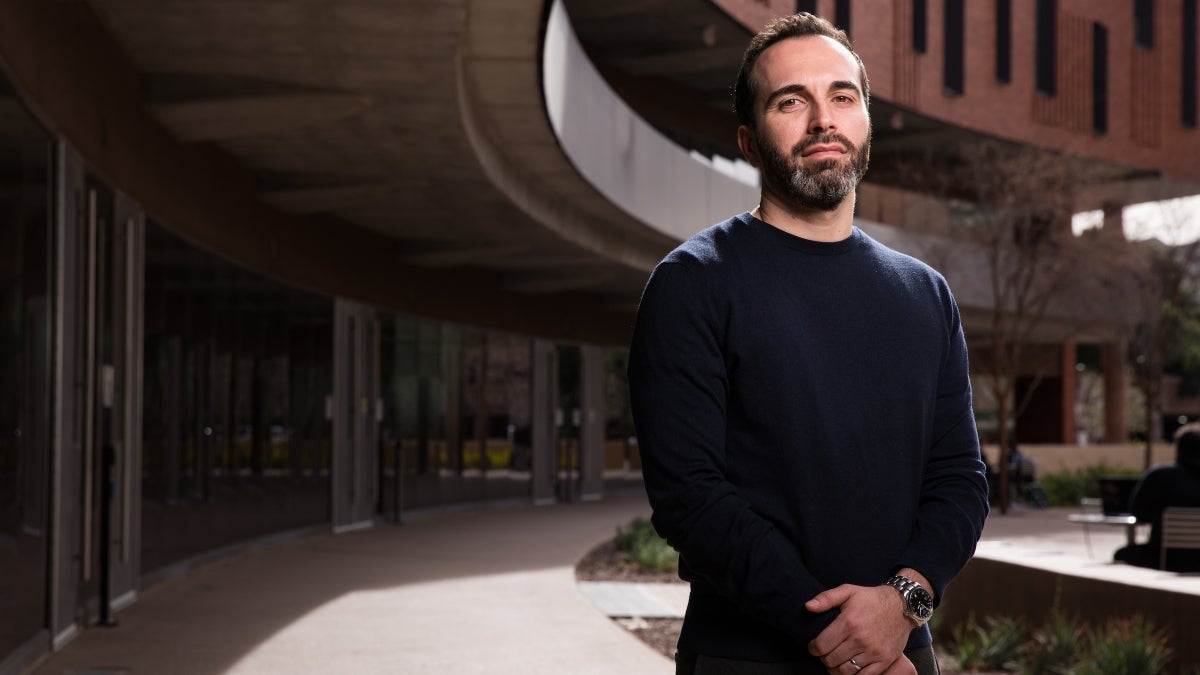ASU research casts doubt on subsidized child care as a way to boost birth rate

When the birth rate in Germany began falling in the 1990s, the country worried that producing fewer tax-paying workers could hurt the economy. That led to new policies to encourage families to have more children, including an expansion of subsidized child care.
New research by an Arizona State University professor, however, casts doubt on how effective these policies can be.
Alexander Bick, an assistant professor of economics in the W. P. Carey School of Business, created a model to evaluate the policies, based on a large German household data set to predict outcomes.
Bick looked at the two recent reforms. The first gave subsidized child-care slots to working mothers of children age 2 and younger, and the second expanded that to all young children, regardless of whether the mothers worked.
“I was curious to understand what we should expect of this reform. It’s a big reform that could potentially cost a lot of money, although it could be self-financing because if so many women go to work they are increasing productivity and paying taxes,” he said.
“The hope was this would boost mothers of young kids working and also have an impact on fertility in the sense that it will be easier combine work and life.”
His paper, titled “The Quantitative Role of Child Care for Female Labor Force Participation and Fertility,” was published in the Journal of the European Economic Association.
As it turns out, the predicted effects might be disappointing for policymakers. His model forecasts that subsidized child care might induce mothers who work part time to go to full time — and lead to a sizeable increase in women returning to the workforce. But the increase is not large enough to conclude that the lack of subsidized child care accounts for the low employment of German mothers with very young children, compared with mothers with older preschool children in GermanyThe birth rate in Germany was about 1.4 births per woman in 2010, compared with 1.6 in the European Union, 2 in the United States, and 2.5 worldwide in the same year. or compared with other European countries. Moreover, the policy falls short of the proclaimed goal to increase the fertility rate.
To create the life-cycle model, Bick used variables including number of children, labor force participation and various child-care choices. He estimated this model using data from the German Socioeconomic Panel, a longitudinal survey of about 11,000 households in the Federal Republic of Germany from 1984 to 2015.
“These models allow us to play around with the policies and evaluate their potential impact even before they have been put in place,” he said.
Bick’s model predicted that when subsidized child care was expanded, there was a “substitution effect,” as the working mothers were already using some other form of child care, like grandparents, so they could now use the subsidized child care.
“These women are already working, and this might make their life easier. What I found was these women started to work longer hours,” he said. “When people talk about policy reform, we have to see what choices people are already making that are limiting to some degree the effectiveness of these policies. Many mothers already choose to not work, and they still can use these policies for their older children. So why would you think you could incentivize those mothers to work when their children are of an even younger age?”
And because taxes are increased to finance the subsidized child care, the fertility rate actually decreased slightly, as households had to pay more taxes and therefore have less resources available. He said that in a few years, there likely will be enough data to determine the accuracy of the forecast on subsidized child care.
Bick intentionally did not focus on any developmental benefits of child care to children, sticking to participation and choice. His research focuses on workforce participation, and in another recent paper, he showed how differences in tax rates led to variations in women’s workforce hours across the U.S. and a large number of European countries.
Top photo: Alexander Bick, an assistant professor of economics in the W. P. Carey School of Business, created a model to forecast the outcomes of new child-care policies in Germany. Photo by Deanna Dent/ASU Now
More Local, national and global affairs

What’s next for unions? ASU center investigates evolving strategies in new report
Port workers hanging up their hats on the East Coast. Starbucks employees putting down their aprons before Christmas. Ski patrollers signing off in Park City as fresh powder piles up. The past year…

Protecting national security in a rapidly changing world
As the 21st century dawned, the challenges facing our nation and the world — such as cyberthreats, resource scarcity and space security — became too big to solve with traditional research methods.…

Accreditation helps build exacting standards, public trust in law enforcement agencies, ASU professor says
Accreditation is a tool police agencies can use to help assure the public that sworn personnel adhere to high professional standards, says an Arizona State University professor who recently completed…